Discover the North East’s common arable grasses and start identifying your own in the fourth instalment of a new series of blogs by NHSN Senior Naturalist, James Common.
In our last post exploring the common and familiar grasses of North East England, we focused on the species found in woodland and hedgerows. Now that we’ve covered those, it seems like a good time to turn our attention to another limited but interest group of species: our arable grasses.
The species highlighted in this post are those most commonly found on regularly disturbed ground, such as farmland and arable margins. While all of these grasses are relatively widespread, they remain somewhat localised, with their abundance often influenced by farmland management practices and the extent of set-aside land.
If you do come across any of these species, please consider submitting a record to iRecord.
#22 Black-grass
Black-grass (Alopecurus myosuroides) is an uncommon species in our region, although it appears to be increasing in frequency. A member of the foxtail family, it shares the upright, dense panicle characteristic of related species, however, in Black-grass, the panicle is notably narrow – measuring just 3–6 mm wide – green to purplish in colour, and tapering to a fine point.
The plant forms loose tussocks, with stems often bent at the base. Its leaves are hairless, flat, and distinctly rough to the touch, while the leaf sheaths are smooth and rounded and the ligule is relatively long (2–5 mm) with a rounded tip.
In other parts of the country, Black-grass is recognised as a serious weed of arable crops.

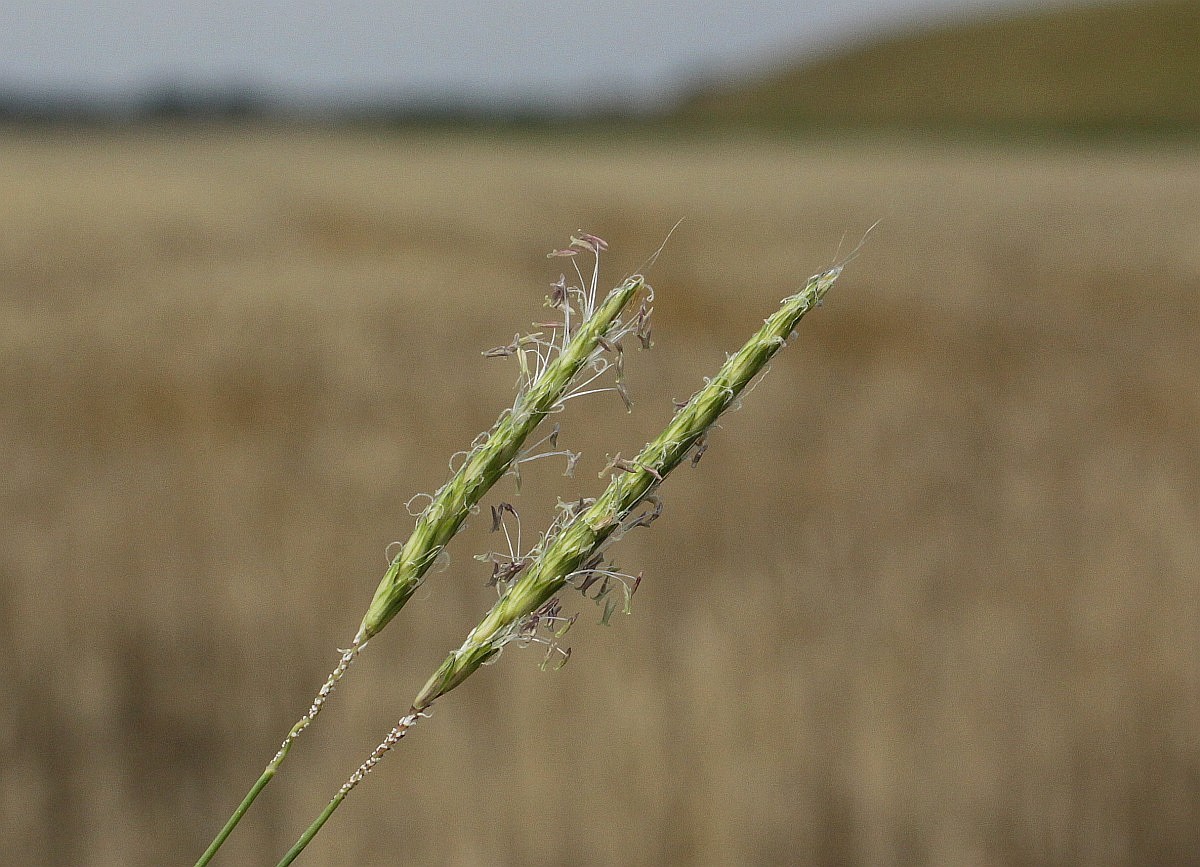
#23 Great Brome
Great Brome (Anisantha diandra) is a tall, striking grass, similar in appearance to Barren Brome but much rarer in our region. It typically colonises disturbed ground on farmland, though it may occasionally be found in other habitats such as hedgerows and urban areas.
Like Barren Brome, this species produces tall flowering spikes with numerous wedge-shaped, long-awned spikelets borne on slender branches, giving it a somewhat graceful appearance. A key distinguishing feature is the more upright posture of the flower spike, which usually lacks the pronounced ‘droop’ seen in Barren Brome – though it may still arch slightly.
Notably, the rachis ( the central stem) of Great Brome is distinctly hairy, in contrast to the often hairless rachis of Barren Brome. The leaves are broad, hairy, and rough to the touch, and the sheaths are coarsely hairy, as illustrated in the image below.
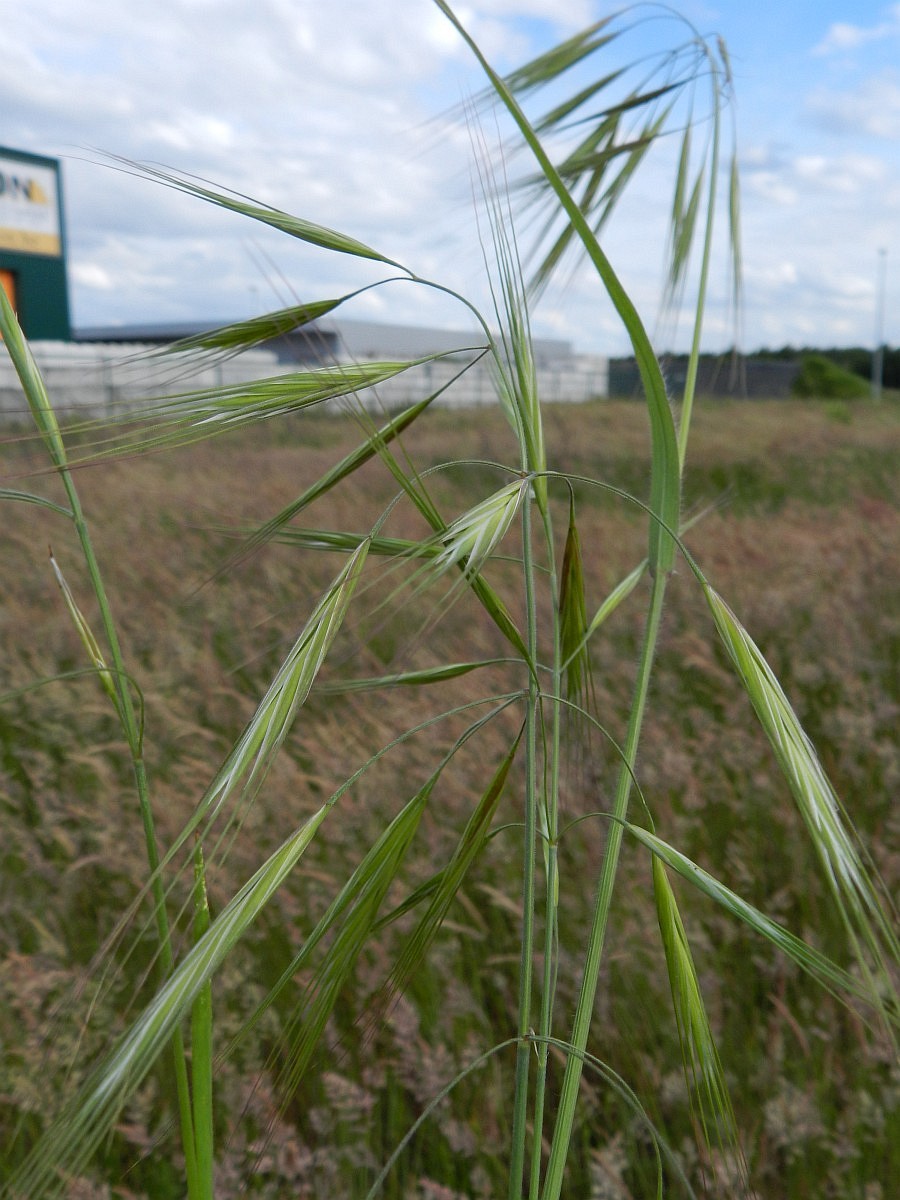
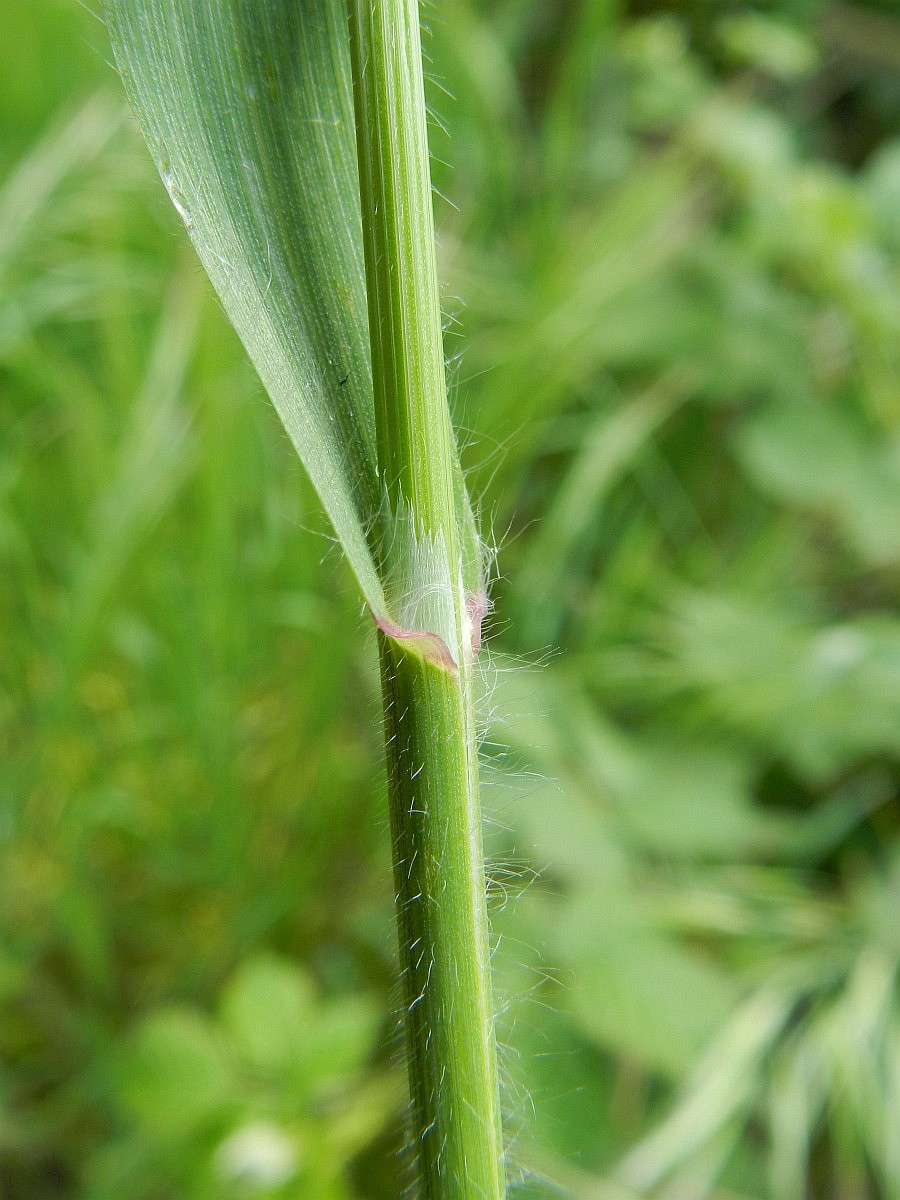
#24 Squirreltail Fescue
A native annual common on many types of dry, disturbed ground, Squirreltail Fescue (Vulpia bromoides) and the related Rat’s-tail Fescue (Vulpia myuros) are distinctive for their short stature, clump-forming habit, and delicate flower spikes adorned with long, tail-like awns. Squirreltail Fescue tends to be more abundant in the North East and typically has slightly shorter inflorescences, measuring 2–10 cm in length.
To tell them apart, close inspection of an individual flower is necessary and a hand lens is particularly helpful. Focus on the glumes (the two membranous bracts surrounding the spikelet of a grass). In Squirreltail Fescue, the lower glume is typically half to three-quarters the length of the upper glume while in Rat’s-tail Fescue, the lower glume is noticeably shorter.
Both species have narrow, flat or slightly inrolled leaf blades that are softly downy on the upper surface and smooth beneath.
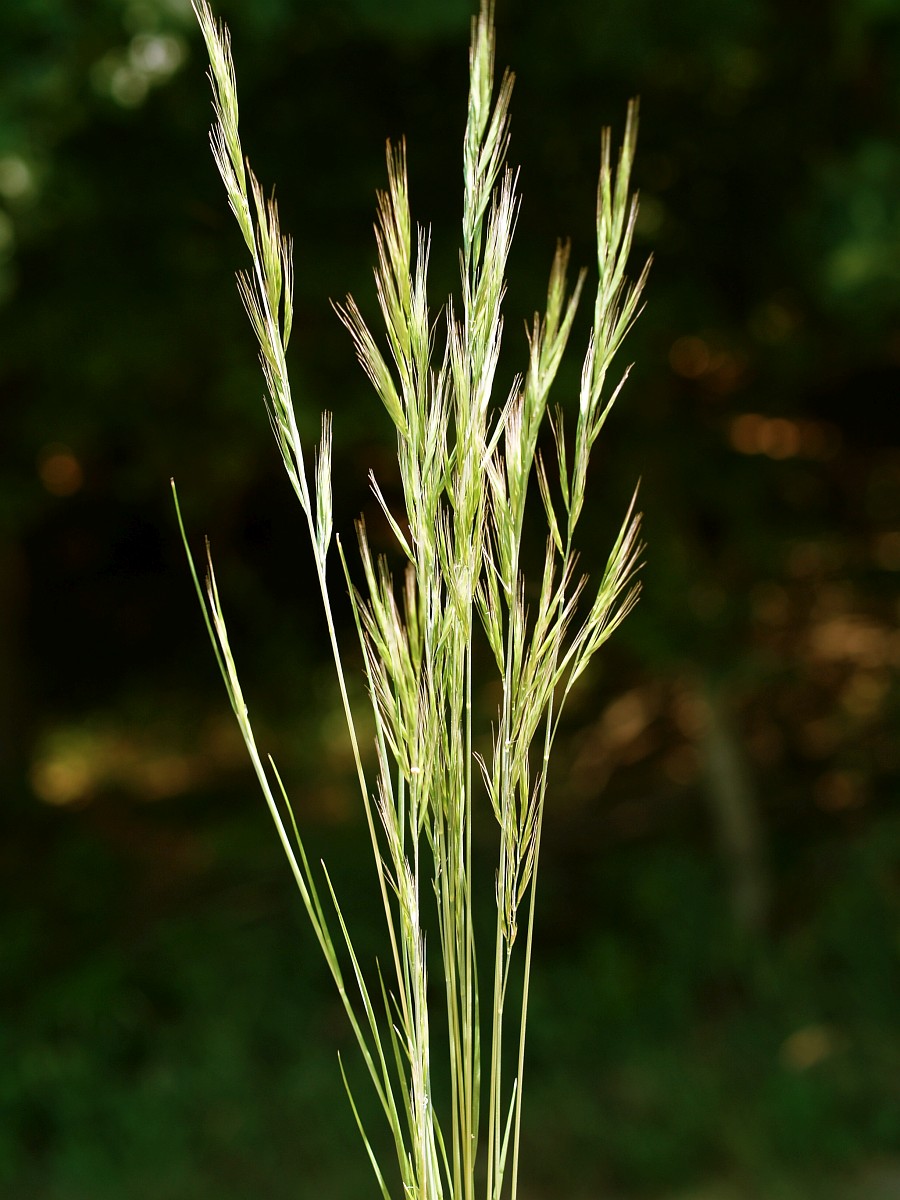
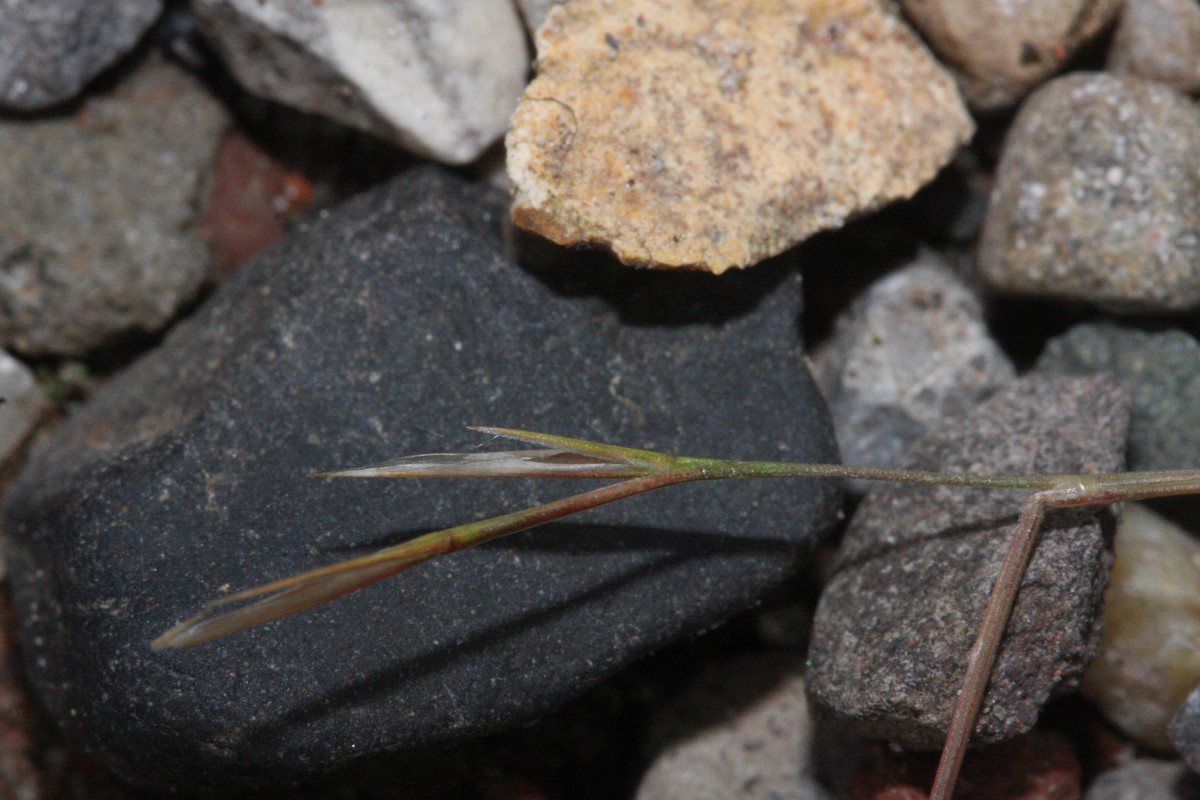
#25 Rye Brome
Rye Brome (Bromus secalinus) is a tall grass, reaching heights of around 1 metre, and is a distinctive though uncommon species. Introduced from Europe as a grain contaminant, it now occurs sporadically as a ‘weed’ of cultivated areas and is most often found on neglected farmland.
This species shares the broad, ‘oaty’ heads characteristic of other bromes, but its spikelets have a notably broader appearance due to the lemmas spreading outward rather than overlapping smoothly. These spikelets bear mid-sized awns that are often distinctively kinked or bent, forming part of a loose, open flower spike with a characteristically nodding habit.
The leaves of Rye Brome are broad – up to 12 mm wide – hairy, and rough to the touch. The leaf sheaths are rounded and typically quite smooth, except for a few straggly hairs near the base.
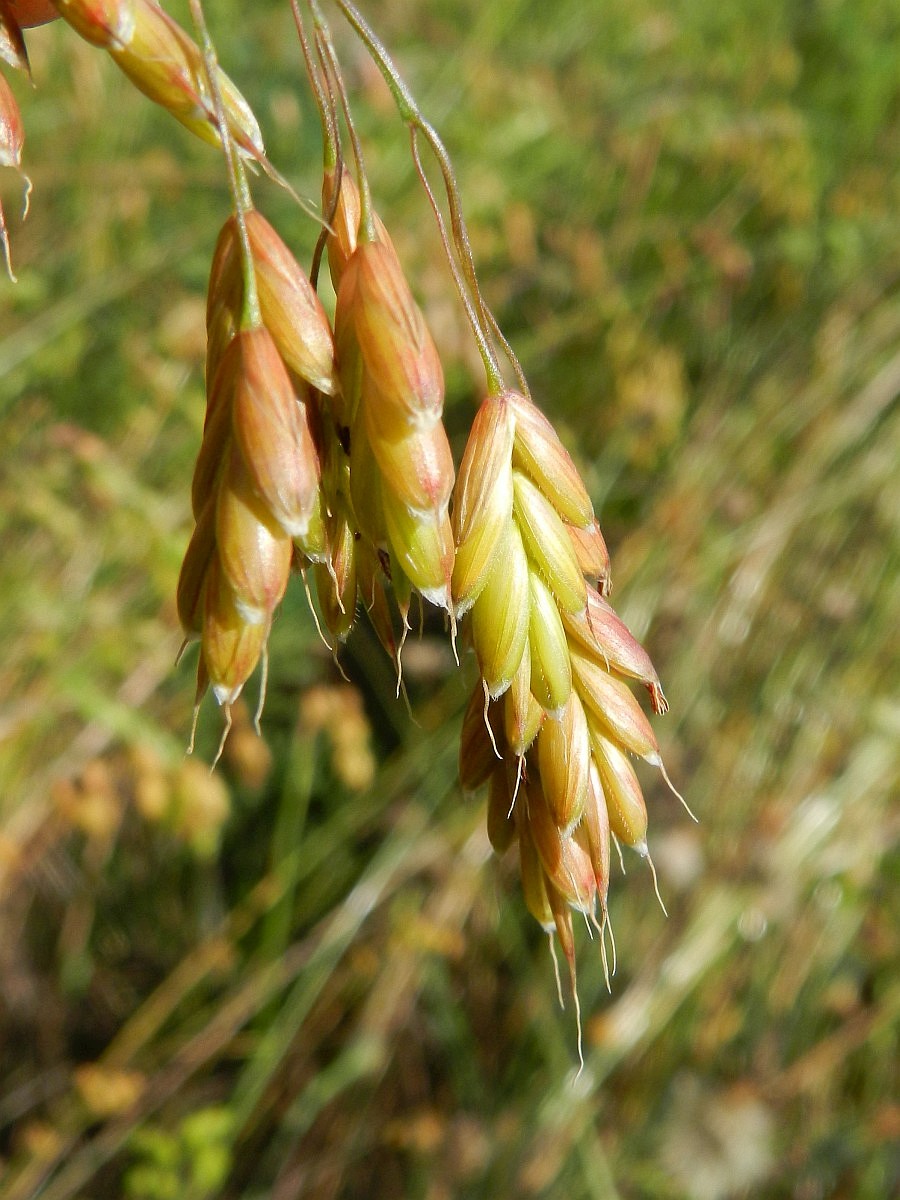
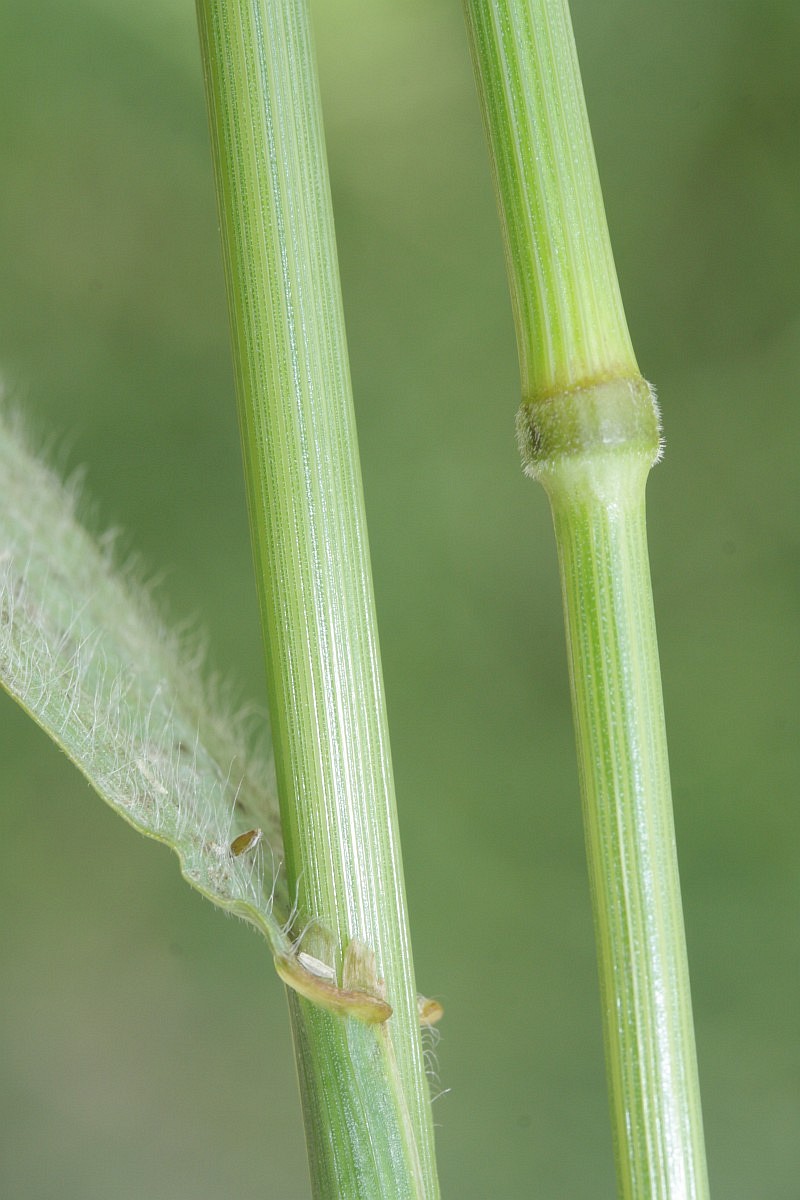
#26 Wild Oat
Not to be confused with the cultivated Oat (Avena sativa), which is widely grown as a crop in our region, Wild Oat (Avena fatua) is an ancient introduction from continental Europe, occurring in a similar way to Rye Brome. It shares the distinctive, open, long-branched flower spikes typical of oats and produces large spikelets that develop a characteristic droop when in fruit.
The spikelets of Wild Oat are noticeably long (18–30 mm) and bear long lemmas with a bent and twisted awn that arises from or near the middle of the back. At maturity, these spikelets are usually hairy and clothed at the base with fine, silky brown hairs.
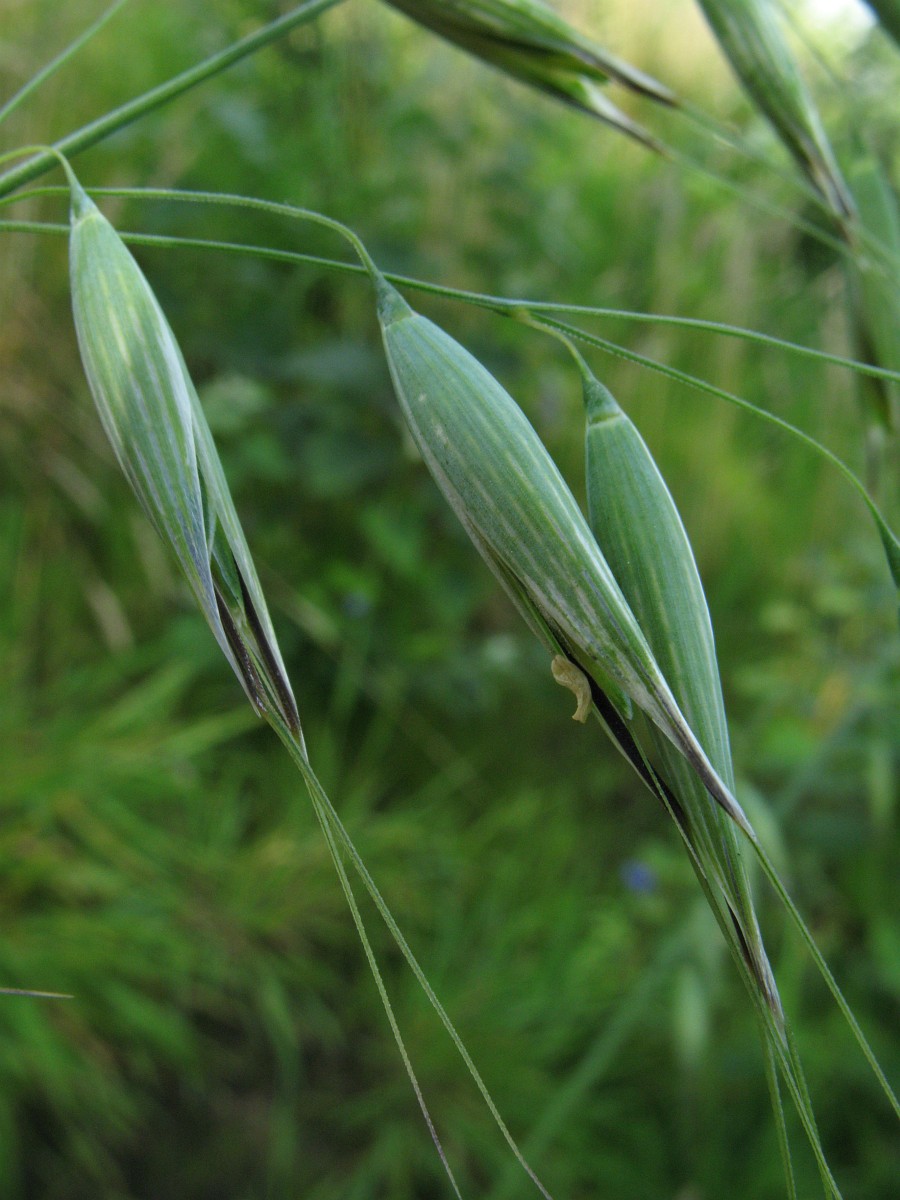
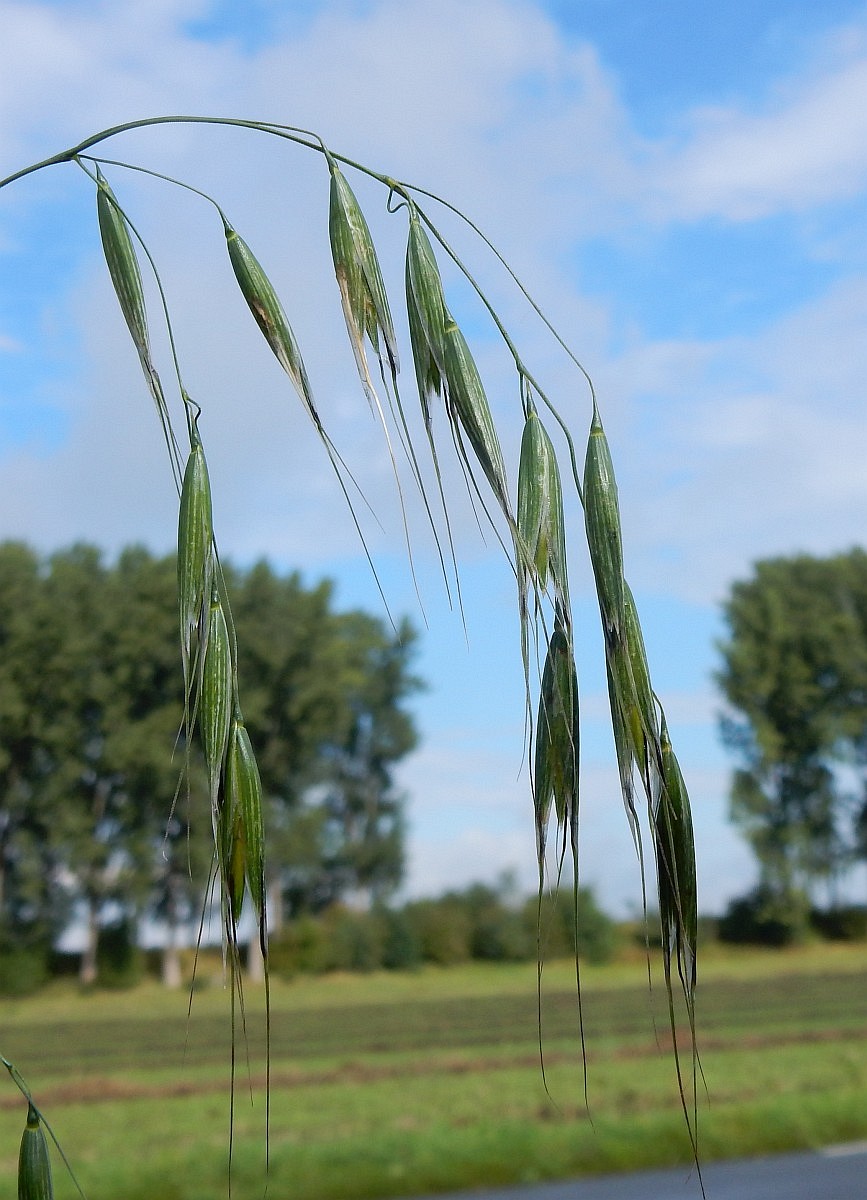
And that concludes our whistle-stop tour of some of the North East’s more common arable grasses. Of course, there are other species out there, but the ones featured here should provide a solid starting point if you’re keen to explore further.
With 26 grass species covered so far, there are still a few more easy wins to round off the series. In our final post, we’ll turn our attention to common non-native grasses that are likely to crop up in urban environments including city pavements, garden walls, and waste ground.